How Diverse are Comics and Graphic Novels?
Diverse characters are on the rise in comics and graphic novels. But superhero comics remain predominantly white and male.
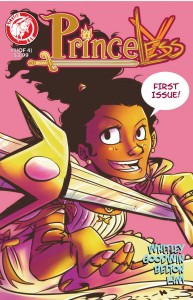 When it comes to diversity, it often seems like comics and graphic novels exist in two parallel universes: Superhero comics and everything else. While the first has a long way to go in terms of diversity, graphic novels are seeing a broader range of authors and characters, and that trend is growing. Superhero comics, which include the big Marvel and DC properties that are spun out into countless movies and TV shows, have traditionally been written by and for white men. Most of the leading characters are male as well. The writers and artists don't own the characters they are working on, and fans are intensely loyal to the traditional versions of characters. However, this world is changing, albeit slowly: Creators such as Gail Simone, author of Bird of Prey (DC, 2004) and Scott Snyder, co-author of American Vampire (DC, 2014), have called for more diversity in the medium, and have embraced it in their work as well. Marvel has seen considerable success with the character Carol Danvers, the newest incarnation of Captain Marvel (2012-14); Kamala Khan, the Pakistani-American teenager who is the new Ms. Marvel (2014); as well as Miles Morales, the mixed-race teenager who is the alter ego of Spider-Man in Brian Michael Bendis and Sara Pichelli's Ultimate Comics Spider-Man (2011-13). Nonetheless, superhero comics remain predominantly white and male.
When it comes to diversity, it often seems like comics and graphic novels exist in two parallel universes: Superhero comics and everything else. While the first has a long way to go in terms of diversity, graphic novels are seeing a broader range of authors and characters, and that trend is growing. Superhero comics, which include the big Marvel and DC properties that are spun out into countless movies and TV shows, have traditionally been written by and for white men. Most of the leading characters are male as well. The writers and artists don't own the characters they are working on, and fans are intensely loyal to the traditional versions of characters. However, this world is changing, albeit slowly: Creators such as Gail Simone, author of Bird of Prey (DC, 2004) and Scott Snyder, co-author of American Vampire (DC, 2014), have called for more diversity in the medium, and have embraced it in their work as well. Marvel has seen considerable success with the character Carol Danvers, the newest incarnation of Captain Marvel (2012-14); Kamala Khan, the Pakistani-American teenager who is the new Ms. Marvel (2014); as well as Miles Morales, the mixed-race teenager who is the alter ego of Spider-Man in Brian Michael Bendis and Sara Pichelli's Ultimate Comics Spider-Man (2011-13). Nonetheless, superhero comics remain predominantly white and male. 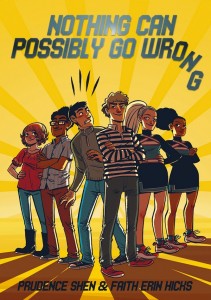 The rest of comics, which includes graphic novels, webcomics, and self-published comics, is much more diverse, simply because there are many different stories to be told and many paths to success. So are graphic novels, produced by traditional book publishers, where women have been well represented for years. Comics also have strong grass roots: Many creators hone their craft and build an audience via self-published comics or webcomics. In addition, the manga boom of the late 1990s and early 2000s not only brought in more female readers, but encouraged them to become creators via outreach efforts such as Tokyopop's Rising Stars of Manga competition. While that contest is long gone, editors scout for new talent on open platforms such as webcomics and Tumblr. As a result, many of the most prominent creators of children's and young adult comics are women. Raina Telgemeier, the author of Smile and Drama, (both Graphix, 2010 and 2012) and Faith Erin Hicks, the creator of Friends With Boys and the artist for Nothing Can Possibly Go Wrong (both First Second, 2012 and 2013), are among the most popular. Both write about the experiences of tween and teen girls, and Telegemeier has been featured in the Wall Street Journal.
The rest of comics, which includes graphic novels, webcomics, and self-published comics, is much more diverse, simply because there are many different stories to be told and many paths to success. So are graphic novels, produced by traditional book publishers, where women have been well represented for years. Comics also have strong grass roots: Many creators hone their craft and build an audience via self-published comics or webcomics. In addition, the manga boom of the late 1990s and early 2000s not only brought in more female readers, but encouraged them to become creators via outreach efforts such as Tokyopop's Rising Stars of Manga competition. While that contest is long gone, editors scout for new talent on open platforms such as webcomics and Tumblr. As a result, many of the most prominent creators of children's and young adult comics are women. Raina Telgemeier, the author of Smile and Drama, (both Graphix, 2010 and 2012) and Faith Erin Hicks, the creator of Friends With Boys and the artist for Nothing Can Possibly Go Wrong (both First Second, 2012 and 2013), are among the most popular. Both write about the experiences of tween and teen girls, and Telegemeier has been featured in the Wall Street Journal. 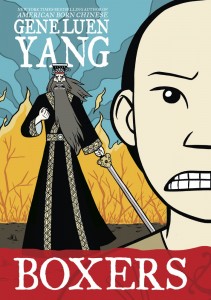 With regard to people of color, the picture is less clear. Asian Americans are well represented: Gene Luen Yang has written about Chinese history in Boxers and Saints (First Second, 2013) and the Asian American experience in American Born Chinese (Square Fish, 2008), and he also writes the “Avatar: The Last Airbender” graphic novels (Dark Horse, 2012-14). Kazu Kibuishi, cerator of Amulet (Graphix, 2008-14), the Flight anthologies (Villard, 2007-11), along with Derek Kirk Kim, creator of Same Difference (First Second, 2011), Thien Pham, author of Sumo (First Second, 2012), and Jason Shiga, creator of Meanwhile (Abrams, 2010), are also among the best-known Asian American creators. There are fewer graphic novels created by African Americans, but one of the most heralded books of 2013 was the first volume of March (Top Shelf, 2013), Rep. John Lewis's memoir of the Civil Rights movement. Other graphic novels with black protagonists include Harry Bliss's Luke on the Loose (TOON Books, 2009), Jeremy Whitley's Princeless (Action Lab, 2012-14), Brandon Thomas and Lee Ferguson's The Many Adventures of Miranda Mercury (Archaia, 2011), and Jamal Igle's Molly Danger (Action Lab, 2013).
With regard to people of color, the picture is less clear. Asian Americans are well represented: Gene Luen Yang has written about Chinese history in Boxers and Saints (First Second, 2013) and the Asian American experience in American Born Chinese (Square Fish, 2008), and he also writes the “Avatar: The Last Airbender” graphic novels (Dark Horse, 2012-14). Kazu Kibuishi, cerator of Amulet (Graphix, 2008-14), the Flight anthologies (Villard, 2007-11), along with Derek Kirk Kim, creator of Same Difference (First Second, 2011), Thien Pham, author of Sumo (First Second, 2012), and Jason Shiga, creator of Meanwhile (Abrams, 2010), are also among the best-known Asian American creators. There are fewer graphic novels created by African Americans, but one of the most heralded books of 2013 was the first volume of March (Top Shelf, 2013), Rep. John Lewis's memoir of the Civil Rights movement. Other graphic novels with black protagonists include Harry Bliss's Luke on the Loose (TOON Books, 2009), Jeremy Whitley's Princeless (Action Lab, 2012-14), Brandon Thomas and Lee Ferguson's The Many Adventures of Miranda Mercury (Archaia, 2011), and Jamal Igle's Molly Danger (Action Lab, 2013). 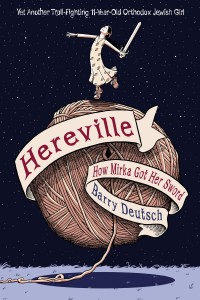 It's possible to find comics and graphic novels that speak to many other experiences, but the field lacks depth. The graphic anthology Trickster (Fulcrum, 2010) is a compilation of traditional Native American stories, but comics about contemporary Native Americans are hard to find. Telgemeier's Drama includes two gay teenagers. Jane Yolen and Mike Cavallaro's two “Foiled” books (First Second, 2010, 2013) feature a key character with a physical disability. Barry Deutsch's “Hereville” (Amulet, 2010, 2012) is set in an orthodox Jewish community. Keshni Kashyap and Mari Araki's comic diary Tina's Mouth (Houghton Mifflin Harcourt, 2012) is told from the point of view of an Indian teenager. These are all strong books, but currently, there are no follow-up titles with similar characters or settings for the reader to turn to next.
It's possible to find comics and graphic novels that speak to many other experiences, but the field lacks depth. The graphic anthology Trickster (Fulcrum, 2010) is a compilation of traditional Native American stories, but comics about contemporary Native Americans are hard to find. Telgemeier's Drama includes two gay teenagers. Jane Yolen and Mike Cavallaro's two “Foiled” books (First Second, 2010, 2013) feature a key character with a physical disability. Barry Deutsch's “Hereville” (Amulet, 2010, 2012) is set in an orthodox Jewish community. Keshni Kashyap and Mari Araki's comic diary Tina's Mouth (Houghton Mifflin Harcourt, 2012) is told from the point of view of an Indian teenager. These are all strong books, but currently, there are no follow-up titles with similar characters or settings for the reader to turn to next.  That will change as the next generation of creators—and readers—comes of age. During a panel at the Chicago Comics and Entertainment Expo in May, Simone remarked, "You walk from one end of the convention to the other and you realize real quickly that it doesn't look like the Justice League from the ‘60s and that we shouldn't be writing for that audience any more." At that same event, the line for the "Gay Creators and Characters" panel was so long that the room reached its capacity of over 300. Over half the attendees at Seattle's Emerald City Comic Con earlier this spring were women. And fans of Carol Danvers, the female Captain Marvel, have formed their own informal network, the Carol Corps.
That will change as the next generation of creators—and readers—comes of age. During a panel at the Chicago Comics and Entertainment Expo in May, Simone remarked, "You walk from one end of the convention to the other and you realize real quickly that it doesn't look like the Justice League from the ‘60s and that we shouldn't be writing for that audience any more." At that same event, the line for the "Gay Creators and Characters" panel was so long that the room reached its capacity of over 300. Over half the attendees at Seattle's Emerald City Comic Con earlier this spring were women. And fans of Carol Danvers, the female Captain Marvel, have formed their own informal network, the Carol Corps. 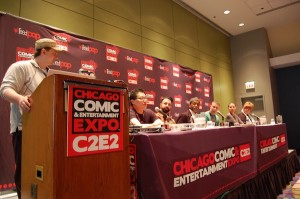
The "Diverse Worlds" panel at the Chicago Comics and Entertainment Expo in May.
Meanwhile, a new generation of creators are connecting with their audience directly, in Artists Alleys, on DeviantArt and Tumblr, through Kickstarter and webcomics. They have already begun to make their mark, and from here, there is no going back.Add Comment :-
RELATED
RECOMMENDED
CAREERS
The job outlook in 2030: Librarians will be in demand
CAREERS
The job outlook in 2030: Librarians will be in demand
ALREADY A SUBSCRIBER? LOG IN
We are currently offering this content for free. Sign up now to activate your personal profile, where you can save articles for future viewing







